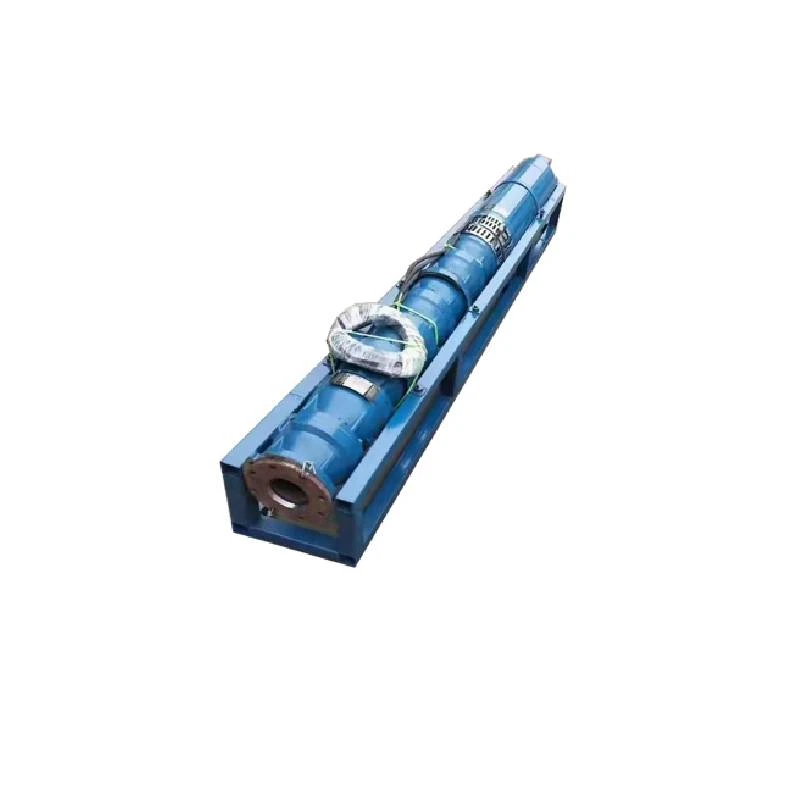Oct . 04, 2024 22:25 Back to list
submersible pump 300 feet
Understanding Submersible Pumps for 300 Feet Applications
Submersible pumps are essential tools in various industries and applications, particularly where the movement of water from significant depths is required. One of the most common applications for submersible pumps is in wells, where they are employed to extract water from depths of up to 300 feet. This article explores submersible pumps, their functionality, selection criteria, and benefits when used for deep well applications.
What is a Submersible Pump?
A submersible pump is a device designed to operate underwater. Unlike traditional pumps, which draw water by creating a vacuum, submersible pumps push water to the surface. Typically encased in a sealed housing, these pumps are completely submerged in the liquid they are pumping. This unique design allows them to work efficiently in deep-water applications, such as in residential, agricultural, and industrial settings.
How Submersible Pumps Work
Submersible pumps consist of a motor, impeller, and other components that work together to move water. When the pump is activated, the electric motor rotates the impeller, creating centrifugal force. This force pushes water from the intake and up through the discharge pipe, delivering it to the surface. The efficiency of a submersible pump depends on the design and construction of these components, allowing it to move significant volumes of water even from depths of 300 feet.
Choosing the Right Submersible Pump
When selecting a submersible pump for depths up to 300 feet, there are several factors to consider
1. Flow Rate Identify the required flow rate based on the application—whether it's for irrigation, home use, or industrial processes. Different pumps provide varying flow rates.
2. Head Pressure The Total Dynamic Head (TDH) is crucial in selecting a submersible pump. It represents the total height that the pump needs to lift water. When calculating TDH, consider the vertical lift, as well as friction losses in the pipes.
3. Pump Size The physical size and power rating of the pump should match the project requirements. Larger and more powerful pumps can handle greater depths and flow rates but may also involve higher energy consumption.
submersible pump 300 feet

4. Material and Durability Submersible pumps are often exposed to corrosive and abrasive conditions, especially in applications like wastewater management. Choosing pumps made from high-quality materials, like stainless steel or thermoplastic, can ensure longevity and reliability.
5. Motor Type Submersible pumps may have different motor types, including single-phase and three-phase motors. The choice will depend on the available power supply and application requirements.
Advantages of Submersible Pumps
Submersible pumps offer several advantages, particularly in deep-well applications
- Efficiency They are designed to operate submerged, which reduces issues like cavitation and allows for energy-efficient water movement.
- Compact Design Their compact size allows for easy installation in tight spaces, especially in wells and boreholes.
- Less Noise As they operate underwater, submersible pumps are usually quieter than surface pumps, providing a more pleasant environment for residential and commercial applications.
- Reduced Risk of Contamination By being submerged, the pump prevents debris and contaminants from entering, leading to cleaner water extraction.
Conclusion
Submersible pumps are indispensable in managing water resources, especially in wells that reach depths of 300 feet. Understanding their operation, selecting the right pump based on specific needs, and recognizing their benefits can help ensure successful water extraction for various applications. As technology advances, submersible pumps continue to evolve, becoming more efficient and durable, making them a wise investment for anyone needing reliable water supply solutions from deep sources.
-
Submersible Water Pump: The Efficient 'Power Pioneer' of the Underwater World
NewsJul.01,2025
-
Submersible Pond Pump: The Hidden Guardian of Water Landscape Ecology
NewsJul.01,2025
-
Stainless Well Pump: A Reliable and Durable Pumping Main Force
NewsJul.01,2025
-
Stainless Steel Submersible Pump: An Efficient and Versatile Tool for Underwater Operations
NewsJul.01,2025
-
Deep Well Submersible Pump: An Efficient 'Sucker' of Groundwater Sources
NewsJul.01,2025
-
Deep Water Well Pump: An Efficient 'Sucker' of Groundwater Sources
NewsJul.01,2025
-
 Submersible Water Pump: The Efficient 'Power Pioneer' of the Underwater WorldIn the field of hydraulic equipment, the Submersible Water Pump has become the core equipment for underwater operations and water resource transportation due to its unique design and excellent performance.Detail
Submersible Water Pump: The Efficient 'Power Pioneer' of the Underwater WorldIn the field of hydraulic equipment, the Submersible Water Pump has become the core equipment for underwater operations and water resource transportation due to its unique design and excellent performance.Detail -
 Submersible Pond Pump: The Hidden Guardian of Water Landscape EcologyIn courtyard landscapes, ecological ponds, and even small-scale water conservancy projects, there is a silent yet indispensable equipment - the Submersible Pond Pump.Detail
Submersible Pond Pump: The Hidden Guardian of Water Landscape EcologyIn courtyard landscapes, ecological ponds, and even small-scale water conservancy projects, there is a silent yet indispensable equipment - the Submersible Pond Pump.Detail -
 Stainless Well Pump: A Reliable and Durable Pumping Main ForceIn the field of water resource transportation, Stainless Well Pump has become the core equipment for various pumping scenarios with its excellent performance and reliable quality.Detail
Stainless Well Pump: A Reliable and Durable Pumping Main ForceIn the field of water resource transportation, Stainless Well Pump has become the core equipment for various pumping scenarios with its excellent performance and reliable quality.Detail
